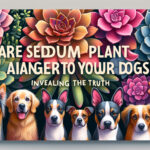Introduction
Welcome to the verdant world of green thumbs and wagging tails, where the serenity of succulents meets the playfulness of our canine companions. A well-tended garden can be a sight to behold, and in recent years, sedums, those hardy and versatile succulents, have become garden staples. It’s not hard to see why—with their diverse forms, vibrant colors, and drought-resistant prowess, they’re the perfect low-maintenance pick for modern landscapes.
But as these fleshy plants find their way into more homes and gardens, a vital question arises for pet owners: Are sedums toxic to dogs? It’s a concern that subtly blends the love for our furry friends with our passion for horticulture. Dog lovers know that their adventurous pups often explore with their noses and mouths, making it essential to be cautious about the flora they can access.
Imagine a sunny afternoon, your garden brimming with life, as Fido romps around, sniffing every intriguing scent. That tranquility can be quickly disrupted by the stress of uncertainty about whether your beloved pet’s curiosity could lead to harm. Here’s what every pet parent should know about creating a pet-safe haven that doesn’t compromise on aesthetics.
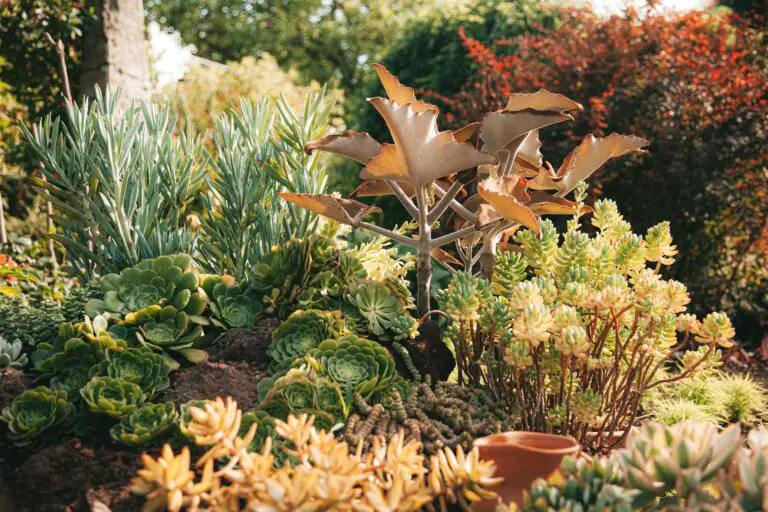
As sedums rise in popularity, it’s crucial that dog owners unearth the truth about these succulents. The harmony between paws and plants relies on knowledge and awareness, both of which we will explore in this article. So, let your curiosity bloom like the very subject of our discussion, and let’s delve deeper into the safety of sedums for dogs.
Profile of Sedums: A Succulent Overview
Imagine a plant that thrives with minimal attention, a real-life ‘set it and forget it’ for the busy or forgetful gardener. Enter the world of sedums, a group of succulents known for their hardy nature and striking appearance. With an array of colors, shapes, and sizes, these plants have earned their spot in the hearts of garden enthusiasts everywhere.
From the stonecrop that clings to alpine ledges to the plush mats of ground-cover varieties, sedums offer a versatility that’s hard to beat. Gardeners often choose these fascinating succulents for their ability to survive in challenging conditions, displaying resilience that’s not just admirable but inspiring. It’s not uncommon to see sedums peeking out of rocky crevices or cascading down a garden wall, each thriving in its unique way.
One example that resonates with many plant lovers is the hardy Sedum ‘Autumn Joy’. This fan-favorite stands tall with deep green leaves and crowns of dusty pink flowers that deepen to a rich bronze as the season progresses, much like a botanical interpretation of the setting sun. Then there’s the ground-hugging ‘Dragon’s Blood’, with its mythical name and foliage that transforms from green to a stunning reddish hue as the temperature drops, as if it’s slowly catching fire with the fall’s cooler touch.
Indeed, sedums attract a flurry of pollinators with their nectar-rich blooms, becoming miniature hubs of biodiversity right in your backyard. For insightful tips on maintaining these diverse plant varieties, a navigational jump to our guide on succulent plant care could be a flourishing first step.
While many sedums are grown for their distinctive foliage and architectural form, they also become a focal point when their blossoms emerge. These plants are not just about survival; they’re about putting on a seasonal show that captures the imagination and transforms landscapes.
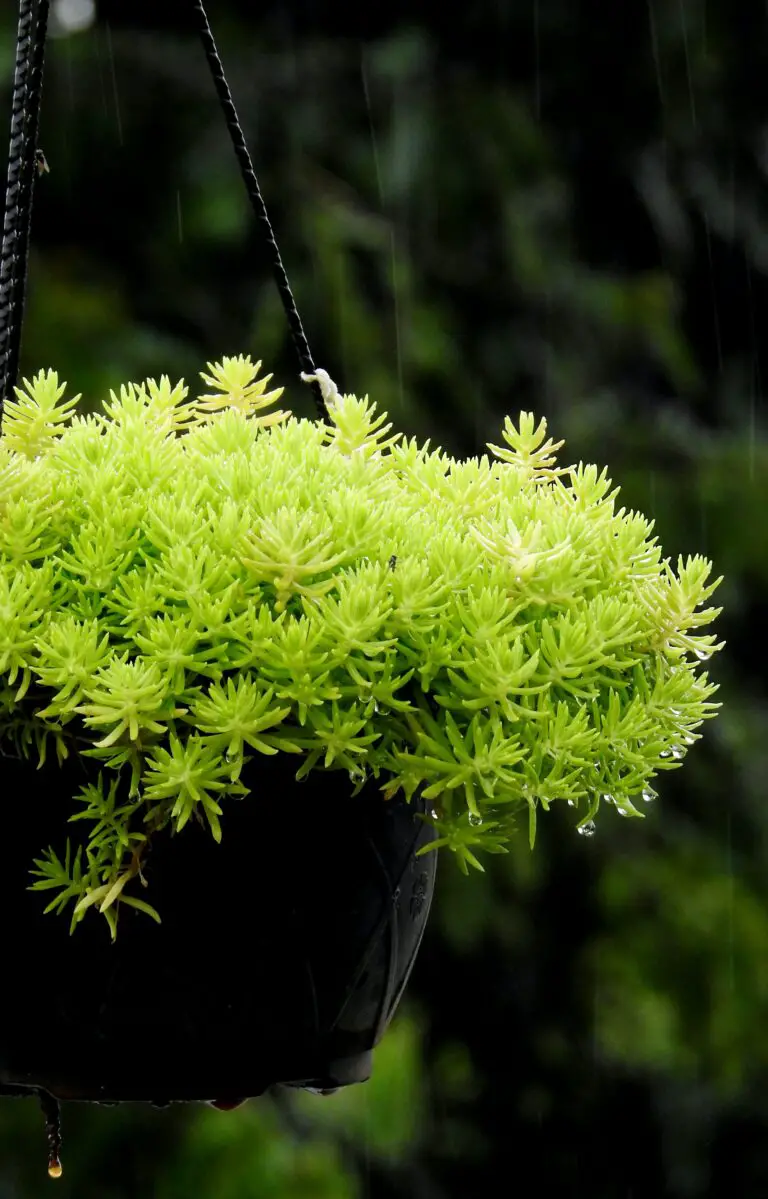
The Canine Concern: Understanding Dog Safety Around Plants
When it comes to the safety of our four-legged friends, particularly in the realm of flora, one cannot be too cautious. Let’s chew over this topic, shall we? Imagine the scene: a sun-drenched living room, a collection of potted sedums lined along the windowsill, and your curious canine companion sniffing around, possibly looking for a leafy snack. This peaceful image could turn worrisome if those plants were harmful to your beloved pooch. It’s a common concern among pet owners – the fear that their horticultural hobby might lead to an accidental poisoning.
But how do sedums specifically play into this domestic garden drama? Our video pick of the day sheds some light on whether sedums are toxic to dogs and provides insights that could help pet owners breathe easier around these succulents. Take a peek for some expert advice.
${video_embed_code}
For instance, across numerous gardens and homes, the humble sedum—a drought-tolerant, easy-care succulent—often finds its way into our outdoor designs and indoor collectives. Yet the question lingers in the air like the scent of fresh mulch: Are these popular plants a hidden hazard to hounds? It’s a valid garden variety query, considering the numerous plant species that can lead to tummy troubles or worse when ingested by pets.
From what we know, certain plants are well-known nemeses of our canine companions, causing everything from mild nausea to critical health crises. But when it comes to sedums, they’re generally not listed on the rogue’s gallery of poisonous plants. A sigh of relief, right? However, that’s not to say our furry friends should start a plant-based diet. Even non-toxic plants can stir up stomach issues if munched on in quantity. And let’s be honest, sometimes the only reason Fido decides to dine on your Dragon’s Blood sedum is to see if it lives up to its mystical moniker.
Therefore, while the sedum secrets have been somewhat unearthed, we should always exercise caution and keep a vigilant watch on our pets’ plant interactions. If you’re interested in widening your plant palette with the safety of your dogs in mind, consider exploring the various tips and guidelines on how to create a pet-friendly garden space. It never hurts to dig a little deeper for that peace of mind, ensuring your garden is a sanctuary for all living creatures, paws included.
In short, when pondering the question, “are sedums toxic to dogs,” the answer leans toward a no, but this doesn’t mean we should let our guard down. By understanding the general safety concerns surrounding plants and canines, we’re sowing the seeds for a safer environment for our tail-wagging pals. So go ahead, cultivate that green thumb of yours, but keep an eye on Buddy—all in the spirit of harmonious cohabitation.
Sedum Toxicity: Fact or Fiction?
When it comes to our furry companions, we dog owners leave no stone unturned to ensure their safety—especially in our gardens. Sedum plants, with their plump leaves and star-shaped flowers, are a common sight in many landscapes. But here lies the million-dollar question: Are sedums toxic to dogs? Let’s dig into the evidence and unearth the truth, shall we?
First off, it’s essential to recognize that not all plants labeled as ‘succulents’ are created equal. Many succulents are non-toxic, happily sharing space with your snuffling, tail-wagging friend. But is this the case with sedums? Anecdotal evidence and cautionary tales have long prowled the internet, but we’re interested in facts, not folklore.
According to the American Society for the Prevention of Cruelty to Animals (ASPCA), the majority of sedum species are generally considered non-toxic to dogs. Yes, you read that right! These resilient succulents are typically safe for your canine companion to coexist with. However, as with any plant, individual reactions can vary, and some dogs may exhibit mild gastrointestinal upset if they decide to have a taste.
Real-life stories of dogs casually navigating through sedum patches without a hitch do support the non-toxic claim. Yet, it’s always prudent to play the role of a cautious pet parent. Keeping an eye on Rover during garden frolics can prevent any unwanted plant sampling, even if the sedum’s track record is clean.
Looking for a green thumb’s perspective? Check out this insightful video on succulents and their compatibility with pets:
While sedums may get a thumbs-up for dog safety, that doesn’t mean you should turn your backyard into an all-you-can-eat buffet for Fido. Moderation is key. As sedums are hardy survivors, they often contain naturally occurring compounds designed to protect them from pests. It’s these same compounds that have the potential to cause a mild upset stomach in our pups.
The final word? While sedums are by and large a pet-friendly choice, remember that each dog is unique. What’s mere garnish to one might not sit well with another. When crafting your garden oasis, it’s always best to keep your vet in the loop and be mindful of what’s within paw’s reach of your curious canine.
Recognizing Toxicity Symptoms in Dogs
When it comes to keeping our canine companions safe and sound, understanding the signs of distress is crucial—especially after they’ve had a misadventure in the garden. If you’re worried that your four-legged friend may have nibbled on some sedum—or any other potentially toxic plant, for that matter—there’s a checklist of symptoms to keep watch for. These will help you distinguish between a minor tummy upset and a situation that calls for a vet’s urgent attention.
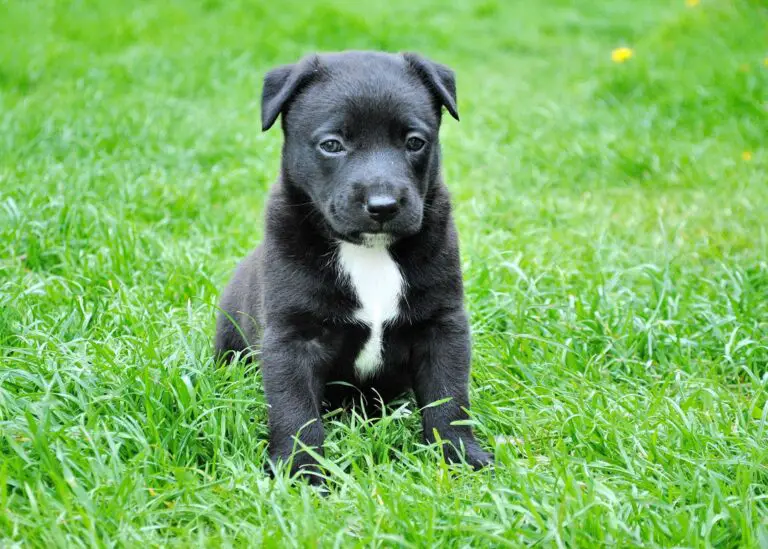
Lethargy is often the first red flag; if Fido’s usually the first one up for a game of catch but is suddenly more couch potato than playful pup, take note. Other worrisome signs include vomiting or retching—particularly if it’s persistent. Occasionally, it might just be a case of ‘eating too fast,’ but when plants are involved, it’s better to err on the side of caution.
Digestive Disturbances: A Clear Indicator
Keep an eye on their eating habits too. A loss of appetite can be a clear indicator of discomfort. And on the flip side, there’s diarrhea—messy, unpleasant, and a potential sign that your dog’s body is trying to rid itself of something nasty. Diarrhea that’s severe or lasts more than a day definitely warrants a call to the vet.
As we dig a little deeper, coordination issues may surface, which is particularly alarming. Imagine seeing your usually graceful Great Dane suddenly wobbling or bumping into things—it’s a scene straight out of a doggy sobriety test and a strong signal that their nervous system might be affected. Time to act, and fast!
When Plants Bite Back: Oral and External Symptoms
Not to be overlooked are oral symptoms. Excessive drooling, for instance, can indicate oral irritation—imagine your pooch has just bitten into a lemon and can’t shake off the taste. Sometimes they’ll paw at their face or mouth, too, clearly disturbed by something they’ve ingested. Other times, it’s the skin that bears the brunt, with rashes or itching suggesting an external reaction to plant toxins.
By now, you’re probably thinking, “But hang on—what about sedums specifically?” Well, with these hardy succulents, many varieties are indeed non-toxic to dogs, yet others can cause gastrointestinal upset and skin irritation. The best thing you can do? Keep a close watch on Rover any time they’re near the garden and familiarize yourself with the particular flora you’re growing.
Remember, prompt action can make all the difference. If you spot any of these symptoms—especially after a garden frolic—reach for the leash and march straight to veterinary help. Because, really, the garden should be a place of joy for you and your dog, not a source of worry.
Creating a Dog-Friendly Garden: Safe Plants and Practices
As any dog owner knows, our four-legged friends love to frolic outside, often turning our gardens into their personal playgrounds. But as they bound through the beds and borders, how can we ensure their safety among the greenery? The key lies in thoughtful plant selection and a few wise gardening practices.
Let’s dig into the dirt of creating a dog-friendly garden. Just imagine your playful pup chasing a ball around, tail wagging with abandonment, and you’ll realize that the right plants can make all the difference. For starters, incorporating non-toxic plants like sedums is a step in the right direction. These succulents are not only safe for your canine companions but also require minimal maintenance, so you can spend less time worrying about garden upkeep and more time playing fetch!
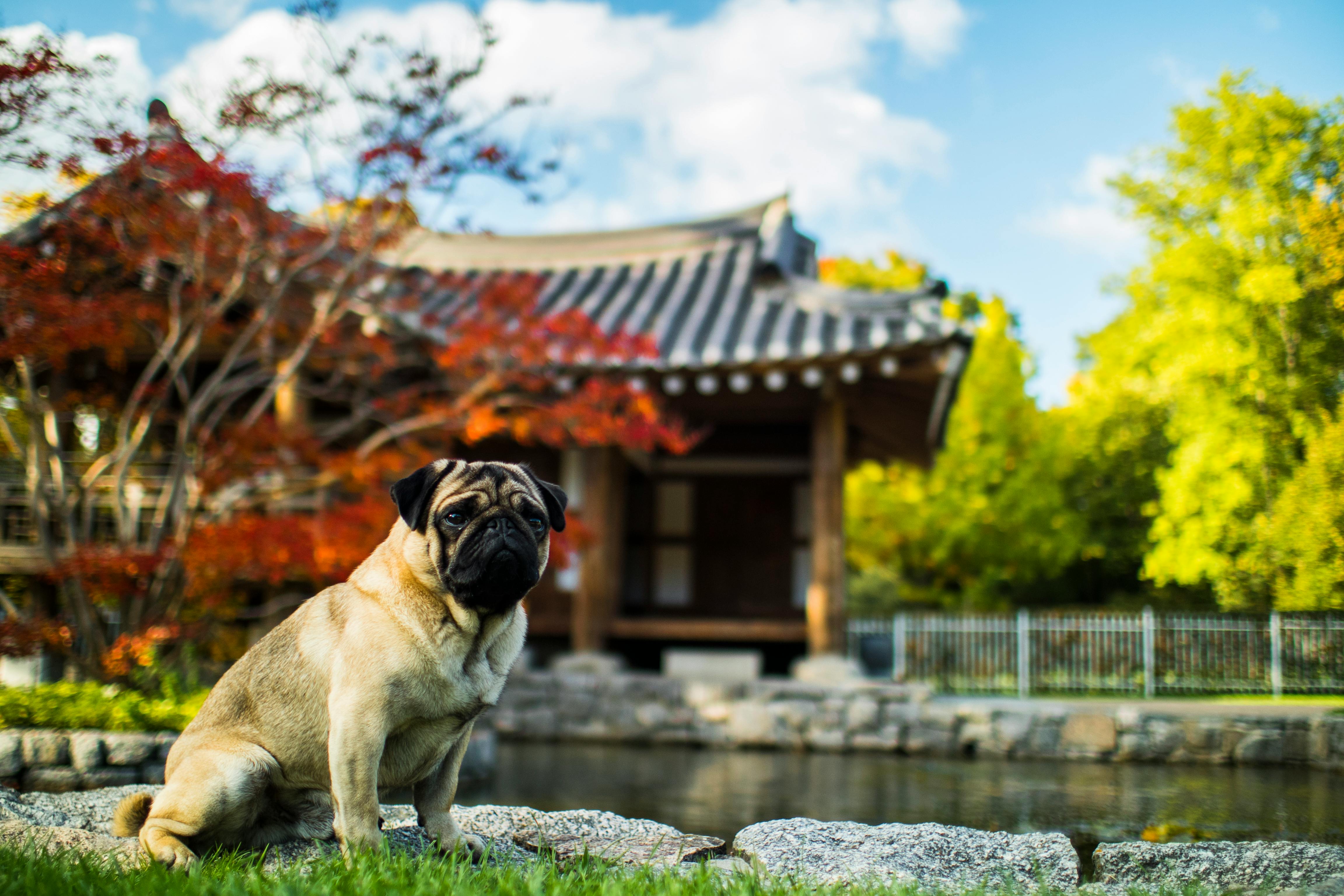
Beyond choosing the right flora, there are some proactive measures you can take to protect your pooch. Consider creating a designated play area, which can help prevent your dog from trampling your prized peonies. Adding a simple barrier, like a low fence or a row of sturdy shrubs, can guide your dog away from areas where they might come into contact with harmful plants.
What if your dog has a taste for garden greenery? Training can play a vital role here. Discouraging them from nibbling non-edibles and rewarding them for good behavior will cultivate not just a lush garden but also a safe haven. Remember that scene where Spot dug up your tulip bulbs? A quick pivot to teaching him to dig in a specific spot can save your flowers and your sanity!
Lastly, regular monitoring can go a long way. Keep an eye on emerging plants and act swiftly if you spot anything potentially dangerous. After all, prevention is better than cure, and a garden patrol is a great excuse to enjoy the outdoors with your furry friend. With these tips, you and your dog can enjoy countless sunny days in your personal slice of paradise.
Emergency Preparedness: What to Do if Your Dog Ingests a Toxic Plant
It’s a quiet Sunday afternoon, and you’re in the garden admiring your lush sedums. Suddenly, you notice your furry companion chomping down on the leaves of a plant. Panic sets in as you remember that some plants can be harmful to dogs. But don’t despair—knowing the right steps to take can make all the difference in safeguarding your pet’s health. Let’s dig into the do’s and don’ts if your four-legged friend has a taste of the wrong greenery.

First Response: Stay Calm and Assess the Situation
Keeping your cool is paramount. Observe your dog for any immediate signs of distress, such as excessive drooling, vomiting, or lethargy. These can be red flags that your pooch is reacting adversely to the plant. Remember, not all plants spell trouble, and symptoms can vary. However, when in doubt, treat the situation with the urgency it deserves.
Act Swiftly: Remove the Plant from Paws’ Reach
Act quickly and remove any remaining bits of the plant from your dog’s mouth and reach. Keeping a sample of the ingested material could be crucial for your veterinarian to identify the plant in question. Every second counts. Time is of the essence, particularly when dealing with potential toxins.
Consult the Experts: Call Your Vet or an Animal Poison Center
If you suspect that your dog has ingested a toxic plant, immediately call your veterinarian or a dedicated pet poison helpline. These experts can guide you through any immediate measures and determine if a trip to the clinic is necessary. It’s essential to have such numbers handy for these unforeseen emergencies.
Detox Plan: Follow the Vet’s Instructions
Should your veterinarian advise you to bring in your dog, be prepared to provide as much information as possible. This could include the plant ingested, the quantity, and the time of ingestion. Your vet may need to administer treatments like activated charcoal to absorb toxins or induce vomiting under controlled conditions. Your cooperation can significantly impact the effectiveness of the treatment and your dog’s recovery.
The idea of your dog encountering a toxic plant can be daunting, but by equipping yourself with the right knowledge and resources, you’ll be planting the seeds of safety and peace of mind. Prevention is paramount, so consider familiarizing yourself with the plants in your home and garden, and make sure those paws stay away from the potential dangers hiding among the leaves.
Expert Insights: Veterinarian Recommendations and Resources
When it comes to our furry friends, every pet parent’s top priority is their well-being. Understanding what our pets can and cannot be exposed to is crucial, especially when it touches on the plants we keep at home. Sedums, those charming succulents that garnish gardens with their vibrant foliage, often stir the question: are sedums toxic to dogs?
Chewing the Facts: What Veterinarians Say About Sedums and Canines
The consensus among veterinarians is reassuring—the majority of sedum species are non-toxic to dogs. However, this doesn’t mean that Fido should make a salad out of your sedum arrangements. While not poisonous, if ingested in large quantities, like any plant material, they could potentially cause mild gastric upset to sensitive pups.
Lenny, a sprightly Beagle with an infamous plant-chewing habit, once had his owners worried sick after a garden escapade. A quick visit to the vet confirmed that a nibble on the sedum plant isn’t a cause for alarm, but Lenny’s tummy told a different story. He experienced some mild discomfort that was swiftly remedied. It’s anecdotes like these that underline a valuable piece of advice: monitor your dog’s interaction with plants, even those deemed safe.
Your Go-To Guide for Pet-Friendly Gardening
Fortunately, there’s a plethora of resources available for dog lovers who like to keep their green spaces pet-friendly. From detailed plant directories to forums and advice from seasoned veterinarians, pet owners have access to a goldmine of information to help them discern which succulents will coexist happily alongside their four-legged companions.
One such gem is the ASPCA’s comprehensive list of non-toxic plants. This resource is an excellent starting point for any pet owner looking to diversify their plant collection without compromising their pet’s safety. Websites like ‘Gardening with Dogs’ and ‘Pet-Safe Gardening Tips’ provide a well-cultivated mix of dos and don’ts, ensuring that every wagging tail in your yard belongs to a healthy and happy pooch.
Remember, not all sedums are created equal. It’s always best to double-check with reliable resources or consult directly with your vet when in doubt. An informed decision is a safe decision when it comes to our canine companions and our charming succulents.
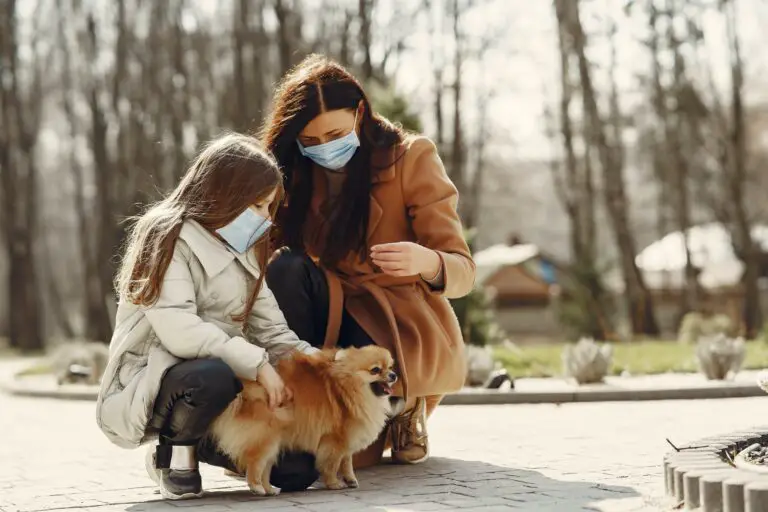
FAQs: Your Top Questions About Dogs and Sedums Answered
Hey there, green thumbs and tail waggers! Ever spotted Fido eyeing your garden with that mischievous twinkle in his eye and wondered, “Are sedums a no-no for my pooch?” Well, you’re not alone! Let’s dive into the dirt and uncover some truths about dogs and these popular succulents.
Can My Dog Play Around Sedums Without Any Worries?
You know that blissful scene, the dog bounding through the garden, sunshine dappling through the leaves? It’s picture-perfect, but as a cautious fur-parent, you might ponder if those sedum plants are safe companions. The good news is that most sedums are not known to be toxic to dogs! These hardy succulents tend to be doggo-friendly, but keep an eye out for less common varieties that may not be. A pet-safe garden is like an extra treat for your buddy – free of worry and full of wag!
What Should I Do If My Dog Takes a Nibble of Sedum?
Picture this: a lazy Sunday, your faithful companion by your side, and then—gulp—down goes a Sedum leaf! Don’t panic just yet. Typically, sedums aren’t toxic, but if Rover has gone to town on your succulent smorgasbord, it’s best to monitor him. Some dogs might get an upset tummy after trying out their green paw at gardening. If you notice any unusual symptoms, a quick call to the vet is the way to go. Better safe than sorry!
Ready for a bit more insight? Check out this video that gets into the heart of succulents and their relationship with our furry friends:
Are There Any Sedum Species That I Should Absolutely Avoid?
Let’s keep it real—while most sedums are safe, there’s always the odd one out. No, we’re not talking about your quirky Aunt Edna; we’re talking about plants here. Your best bet is to do a bit of homework before going on a garden center spree. Research or chat with an expert about the specific sedums on your wishlist. That way, you’ll steer clear of any potential baddies that could rain on your pup’s parade.
Remember, the goal is happy tails and hardy plants. Keep this Chat in mind, and you’ll be mastering the art of pet-friendly planting like a pro!
